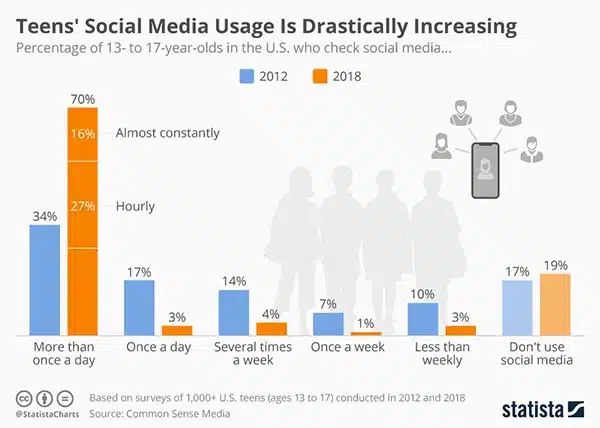
Why Teens Engage in Risky Behavior
The teenage years can be challenging. They are often marked with the challenges of fitting in, making mistakes, and carving a new path for themselves. These years are all about identity development and testing one’s newfound freedoms. One of the ways that this manifests is that teens often crave new experiences and can be thrill-seekers. As a result, most teens find themselves making hard choices when it comes to risky behavior. Results of an international study of teens from 11 countries found that adolescent risk-taking behavior increased to a peak at about age 19. After 19, risk-taking behaviors gradually decreased through people’s mid-late 20s. The good news is that risk-taking is a “phase” for most teens. Let’s explore the reasons why this is the case.

Developmental Stage
Have you ever asked your teenager what you were thinking? Well, there is an explanation,at least for some of their bad decisions. Researchers found that parts of the teenage brain that drive impulse control and planning don’t fully develop until around 25.
The difference in brain development can sometimes be to blame for teens making quick decisions. Often without considering the consequences. Impulse control and planning issues can explain teens’ affinity towards risky behaviors. When talking about risky decision making and teens it is also important to bring up how peer pressure influences teens.
The Impact of Peer Pressure
Social groups or “cliques” have been and continue to be prevalent in junior high and high school. Social groups feel so important to teens because, as they are figuring out their identity, these groups help them figure out how they fit into the world. It is a natural part of development to want to fit in and find their group of peers with whom they belong. It can become problematic when certain peers start to influence others to have risky behaviors. This can be especially true when high-risk behavior is glorified on social media platforms and popular shows.
When teens engage in risky behavior, they might even get attention and positive feedback from their friends. Research has shown that the presence of peers can increase people’s willingness to engage in risky behaviors. Furthermore, it showed that this was especially true among boys, which is not too surprising. Teens desperately want to be accepted by their peers. As a result, they can feel pressure to make risky decisions based on that acceptance, even short-lived. While this seems like common sense, scientific research backs it up.
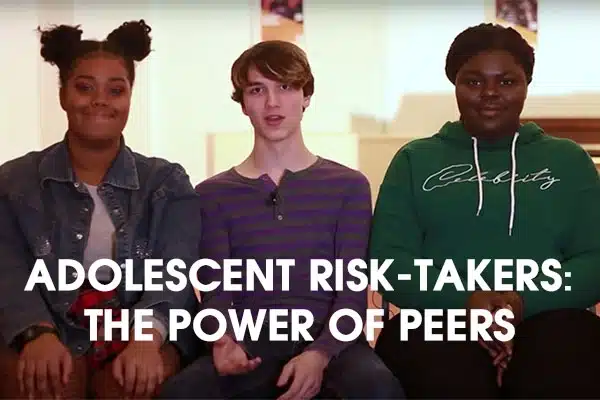
What is the Difference Between Healthy and Unhealthy Risk-Taking?
It is normal for teens to take some risks, hence why car insurance is so expensive for a teen. They will often test any boundary that is set before them. One-time risks like skipping class to hang out with their friends. Or cheating on a test can be harmful but are not all that concerning in the grand scheme of things.
When your teen is engaging in risks that endanger themselves or others, damage relationships or threaten future opportunities, the consequences get more serious.
You Are Not Alone
ThreePeaks Ascent is there for you and your family.
Dangers of Risky Behavior
Teenagers, whose brains are still undergoing the development process, have only a vague idea of the consequences of their actions. This is why it is common to engage in risky behavior as a teenager. They oftentimes are not thinking about the gravity of the situations that they’re getting themselves into, and are more focused on the fun or thrill they get from it. For example, sneaking into their parents’ liquor cabinet with friends might feel exciting in the moment, but they could end up in the emergency room, which they likely are not thinking about in the moment. Teens engage in risky behaviors and often risk their physical and mental health. In addition, risky behaviors can be a slippery slope. They can snowball into other issues, like drug experimentation, leading to addiction.
Examples of Dangerous Risky Behavior in Teenagers
What are you thinking about when you tell your kids to be safe and make good decisions? Let’s get into the details about some of the risk-taking behaviors that may have come to mind.
- Impulsivity
- Substance Abuse and Addiction
- Alcohol and Drug
- Experimentation
- Reckless Driving
- Vaping or Smoking
- Alcohol
- Sexting
- Violence
- Dating Violence
- Self-harm
- Social Media
- Cyberbullying
- Preventable Injury
- Running Away
- Illegal Activities
- Risky Sexual Behaviors
- Unhealthy Dietary Behaviors
- Technology Addiction or Process Addiction
Teenagers can quickly get in over their heads with any of the risky behaviors above. Let’s go into more detail to learn more about each of these categories.
Impulsivity
Teens are known for their impulsive natures. The areas of the brain that control impulsivity and decision-making do not fully develop until someone is around 25. For example, teenagers who are criminals are less likely than adults to be repeat offenders. As teens age, they are able to control their impulses better. Research has also identified that teens are more likely to be influenced by their social surroundings than children or adults. Therefore they are more likely to participate in risky behavior if it helps them fit in.
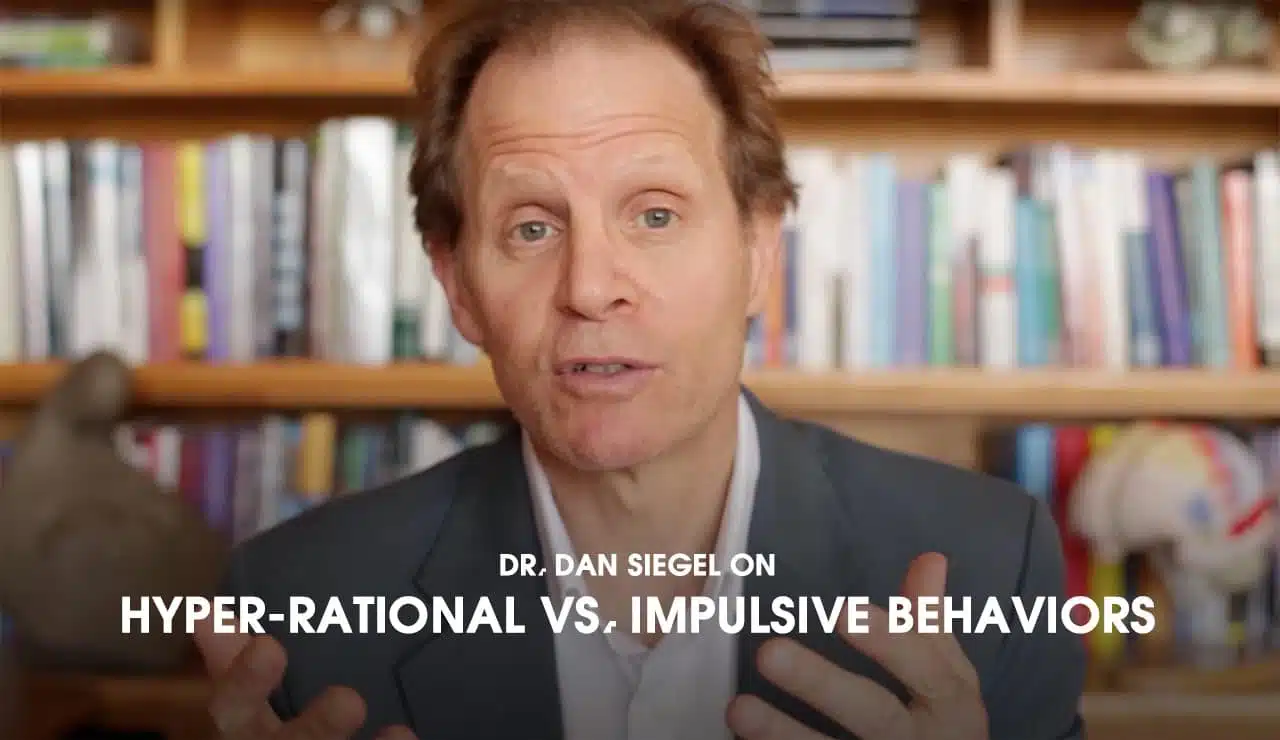
Substance Abuse and Addiction
According to The National Institute on Drug Abuse Research, teenagers and people with mental health disorders are more at risk for drug use and addiction than other populations. Substance abuse and addiction are serious mental health issues. They should not be taken lightly. Teens are susceptible to developing a substance abuse disorder. They are susceptible because of peer pressure, access, and resistance to treatment. If your child is showing signs of substance abuse disorder, it is time to consider professional help.
Alcohol and Drug Experimentation
It is not surprising that drugs and alcohol use decreases the functioning of the prefrontal cortex and increases impulsivity. Teens are already immature in their development in this area of the brain. Drugs and alcohol can cause a teen to be even more susceptible to impulse control issues. Usually, this results in more poor decision-making and reckless behavior.
Reckless Driving
There is a reason why it costs more to insure teen drivers, especially teenage boys. The statistics don’t lie, and teenagers are not only new drivers but also are more likely to drive recklessly. A study found risk-taking behaviors while driving increased in the presence of peers. In contrast, the risk-taking behaviors of adults did not change. Along with the difference, while driving with peers, distracted driving has become a problem. The data shows that 41.5 % of teens text and or email while driving.
Vaping or Smoking
Smoking cigarettes have been seen as “cool” in the past. But now, we are witnessing another popular way to get a nicotine fix, vaping. It has become so popular that tobacco product use has gone up 38 percent among high school students and 29 percent among middle school students between 2017 and 2018. Research is now finding that vaping can harm the body by depositing harmful chemicals and metals in the lungs like formaldehyde, nickel, and lead. In addition, nicotine in any form is highly addictive. It is a risky behavior with long-term negative consequences for teens.
Alcohol
When at-risk youth drink alcohol, they are even more likely to engage in risky behaviors than usual. According to the CDC, there were approximately 119,000 emergency room visits by people between 12 to 21 for injuries and conditions related to alcohol consumption in 2013. When teens combine risk-taking behaviors with alcohol use it puts adolescents at a higher risk for other negative health consequences related to binge drinking, such as alcohol poisoning.
Additionally, teenage alcohol consumption is one of the risk factors linked to mental illness, like anxiety or depression during the teenage years and beyond. A 2016 study found that two-thirds of those who developed alcohol or substance use disorders had experienced at least one mental health disorder.
Self-harm
Self-harm is often an unhealthy way for teens to cope with emotional pain or other strong emotions that they are experiencing. While this behavior might provide temporary relief, it often causes feelings of guilt or shame that make the state of that person’s mental health worse than it was before. They often look for ways to cover up and hide their wounds. Self-harm is a sign of poor communication and coping skills. It is a sign that your child is going through an internal struggle and doesn’t have the tools to cope independently. Proper therapeutic intervention can help identify underlying reasons for the behavior and help your child overcome their struggles.
Sexting
Technology has made sending sexually explicit images easier. It is no surprise then that teens have caught on to the trend, but it might be even more common than you think.
- 1 in 4 teens report receiving sexually explicit texts and emails
- 1 in 7 report sending sexts
- 1 in 10 teens report forwarding these sexts without consent
- 1 in 12 teens report having had texts they sent shared without their permission
One study found that the average age of sexting teens was 15. Sexting is risky behavior that can lead to negative consequences for teens. Youth are being peer pressured into sexting, resulting in significant legal repercussions.
Unfortunately, teens are also getting bullied and having their bodies shamed. As a result, these teens are subjecting themselves to stressful situations that they have poor coping skills for.
Violence
Emotions run high during middle and high school. Bullying, fighting, and even gang violence are something that a young person could get involved with. Unfortunately, these behaviors are often glorified in movies, TV shows, and video games. As a result, teens can become desensitized to the severity of violence.
Dating Violence
Dating violence is not just limited to adults. A CDC study revealed that 26% of women and 15% of men were victims of sexual violence, physical violence, and/or stalking. In the study, they were victimized by an intimate partner and first experienced these or other forms of violence by that partner before age 18. Therefore, it is important to talk to your teens about dating violence so that they are aware of what is and that it is not okay.
Social Media
While social media can be a great tool for people to use to stay connected with friends and family, it has also become a place a harmful and ugly place. Teens can be exposed to explicit content, online predators, and an environment that associates self-worth with the number of likes, views, or comments that one gets on their posts.
Facebook is no longer the leading platform for teens. Instead, around half (52%) of teens said they used Instagram. According to research by the Pew Research Center, 41% of teens ages 13 to 17 were using the Snapchat app in 2018. It is expected that the popularity has only grown since then. However, there are several concerns that parents should be aware of when it comes to Snapchat.
Sexting is one of the reasons that Snapchat gained popularity with the feature that deletes the photo after a set amount of time. Cyberbullying and sexual harassment can be common occurrences on Snapchat as well. A feature called SnapMap can show other users your child’s location.
Further, Snapchat is commonly used for marketing and selling drugs, particularly to the teenage demographic. The real worry with Snapchat is that a lot of the problematic content is flying under the radar. Parental controls like bark can help parents monitor their teen’s social media use, including Snapchat.
Cyberbullying
Bullying has a whole new stage! Can you imagine having social media, text, or other platforms when you were a teenager? There is a disconnect between the words being typed and their effects. Talk to your kids about this kind of treatment and encourage them to tell you about any instance before things escalate.
Preventable Injury
Many young people have difficulty gauging the risks associated with certain situations, making them susceptible to peer pressure and unintentional injury. For instance, they may attempt risky skateboard maneuvers or opt out of wearing helmets due to concerns about looking "cool." In fact, according to one study, most teen injuries come from a lack of preventative measures.
Running Away
When a young person runs away or is missing, it puts an enormous strain on their family. Therefore, teens that run away should always be reported to the authorities, and all efforts should be put forth to return them home or to a safe place.
Illegal Activities
Teens can get themselves in more trouble than they realize when caught doing illegal activities like trespassing, vandalism, or drug possession. Often these types of offenses are done due to peer pressure, poor education, and drug abuse. If your child is participating in these types of behaviors it could be an indication that they are having issues with their mental health.
Risky Sexual Activity
Teenagers who participate in risky sexual behavior like unprotected sex or having multiple sex partners are putting themselves at risk. According to the CDC, half of all new STDs reported each year are among young people 15 to 24. Unfortunately, many teens are not getting the proper education about these topics. Don’t leave this type of education up to schools. It should be a priority for parents whose teens are in middle and high school to educate teens about the consequences they face when engaging in risky sexual behavior.
Unhealthy Dietary Behavior
In the United States, as many as 1 in 10 young women suffer from an eating disorder. And 25% of people diagnosed with an eating disorder are men. Therefore, it is crucial to look for the signs of risky dietary behaviors and disordered eating. Seek treatment for your teen if this high-risk behavior is suspected.
Technology Addiction or Process Addiction
Teens are particularly susceptible to technology addiction, also known as a process addiction. On a deeper level, smartphone and other technology overuse are tied to two serious mental health issues: anxiety and depression. Anxiety disorders affect teens even more than adults. These disorders affect 25.1% of teens between 13 and 18 while affecting 19% of adults. Therefore, it is important to set limits on technology use. Parents should also be watching for signs and symptoms of other mental health disorders so they can be addressed early.
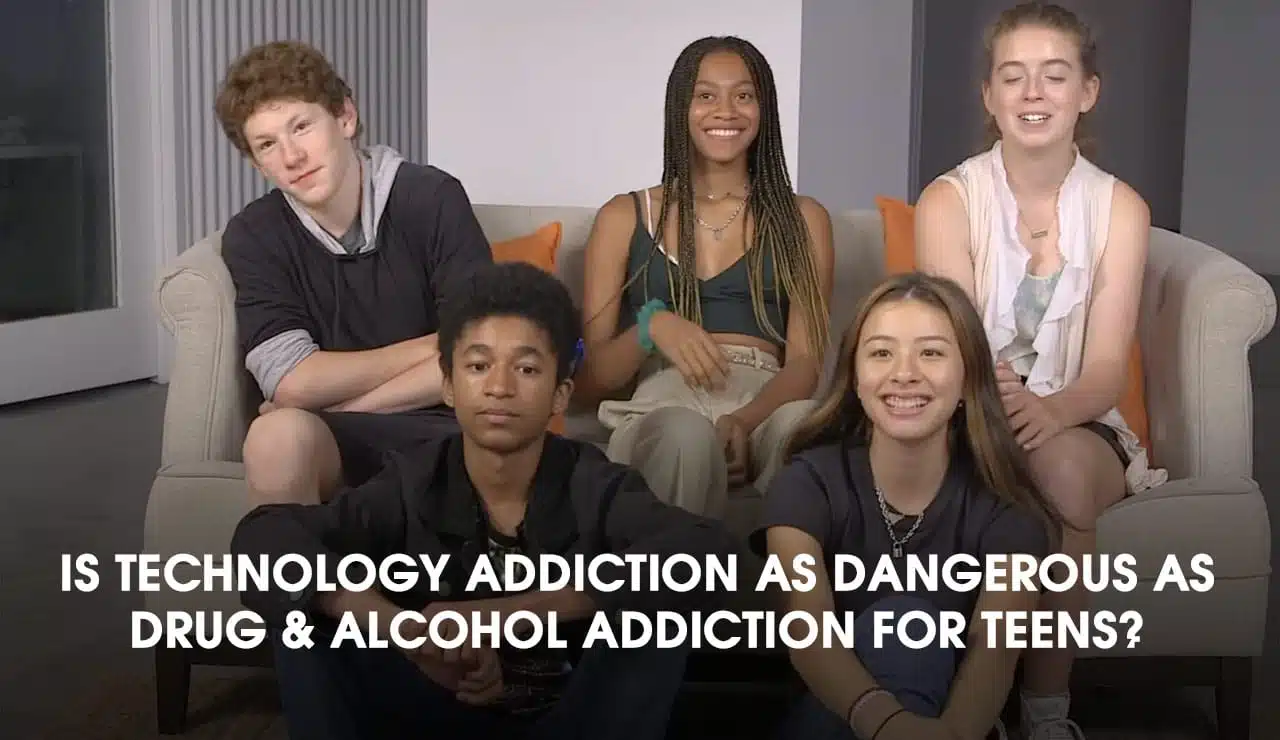
Long-Term Effects of Teenage Risky Behavior
There is a fairly consistent pattern that engaging in risky behaviors as a teenager is associated with less successful adult outcomes. In most cases, the earlier one engages in the behavior, the more likely one faces a bad outcome as an adult.
When teens make risky decisions, it not only hurts their future, it is stressful for the entire family. It is typical for families with teenagers to go through ups and downs. It is also normal for teens to be moody and struggle with communication. Often, teenagers do not understand how their negative behavior affects others. Their behavior can result in family conflict, strain on a marriage, compromise safety, legal, and financial issues.
It is important through difficult times to remember that “family has a very significant role in protecting students against risky behaviors”. Amid the stress caused by teens' risky behavior on their families, it can be tough to realize the vital role your family's support plays in the healing process.
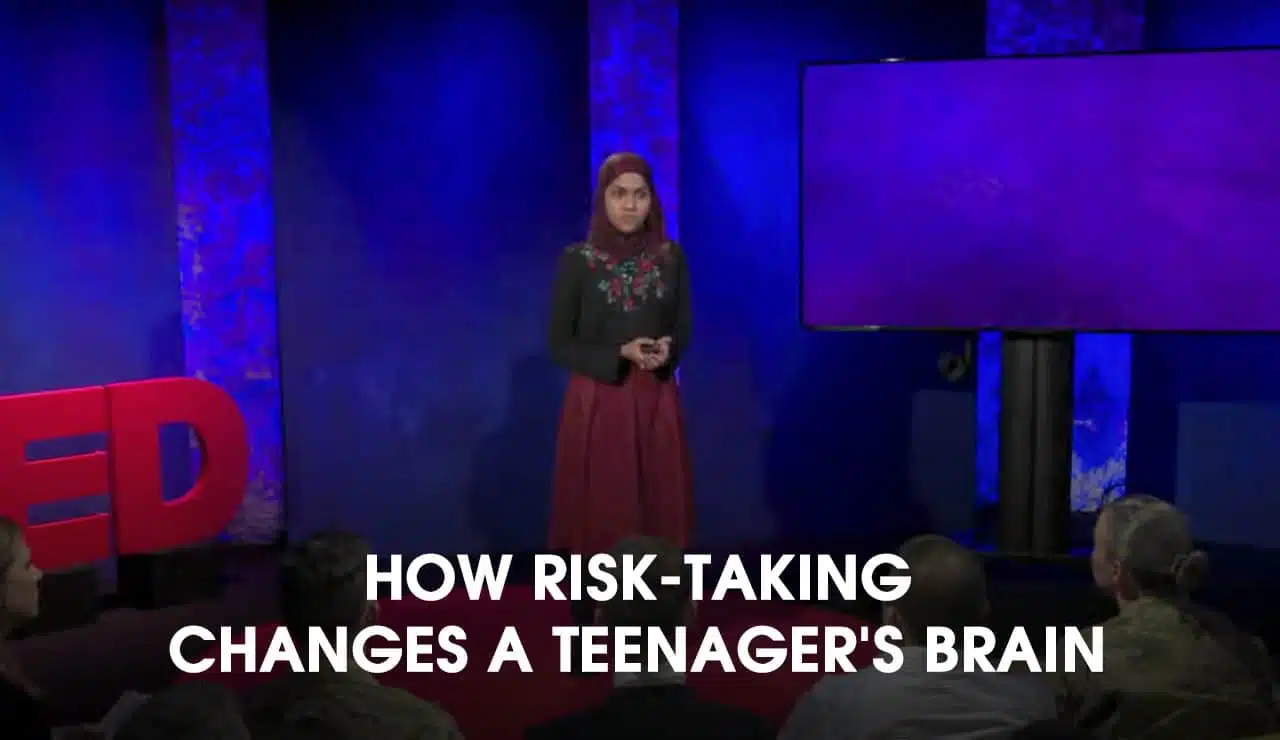
What Parents Can Do
As a parent, when your teen is participating in risky behavior, it can feel devastating and can leave you feeling at a loss for how to help your child. Every situation is different, and it can be hard to know what your teen needs. It is common to struggle with wanting to give your child space to be independent, but also wanting to keep them safe. It all starts with healthy communication with your teen.
Keep Talking and Stay Connected
Communicating with your teen can be challenging. Teens are notorious for having difficulty expressing themselves and feeling like people (especially parents) don’t understand them. That said, it is important to make efforts to “get on their level.” Find out what they are interested in and why. Play a video game with them every once in a while, if that is their thing or hop on a skateboard.
The main thing is to be open and honest with your child so that you can build a trusting foundation and then get involved with their life.
- Have regular, casual conversations with your child centered around them and what they are doing right.
- Get to know their friends
- Set aside some quality time with your teen
Once you have a solid foundation with your child, open up conversations about risky behavior. Ask them what they already know and if they have any questions. When teachable moments come up, take advantage of them. Most importantly, equip your teen with information. Make sure that your teen knows how to make healthy choices and how to rebound from bad decisions. There will be many teachable moments that can be valuable for your teenager as they forge through this challenging time in their lives.
Set Clear Rules, Boundaries, Expectations, and Consequences
We all need structure in our lives in some way or another, even beyond school or work. Having clear rules, expectations and consequences can help add structure for teenagers. Along with that note, teenagers need boundaries as well. Therefore, it is important to teach and role model appropriate boundaries for teens to understand how to respect them in future relationships.
Setting Expectations
Expectations of your teenager should be clear and known by everyone in the family. If you have a blended family, the rules should be consistent for both households. The expectations should also be attainable. Teens are under a lot of pressure today. Make sure you are setting your child up for success. They often need help budgeting their time, and having reasonable expectations can help them do that.
Don't Move The Goal Post
When parents add chores or other things to a teen’s to-do list, it can add tension in the home. Things can not be 100% predictable, but it is best to do so if there is a way to avoid it. With teens struggling to manage their time already, adding unexpected tasks to their plate can lead to more frustration.
Agree Upon Clear Boundaries and Rules
Again, teens do well when there is structure, and boundaries and rules help create that structure. But make your rules and boundaries more about the relationship and not focused on punishing your child. When your teen crosses a boundary, it can be a coaching opportunity. Just know that pushing boundaries is normal for a teen.
Rules should be clear and consistent for teens. Be proactive and in collaboration with your teen establish rules in advance. Working together to establish the rules is helpful so they feel they have a say in them. If you can get your teen to agree to rules in advance verbally they are more likely to accept responsibility if they break them in the future.
Make sure that rules are communicated clearly and are not assumed. This will help you avoid situations where you’re making them up on the spot or changing them at the moment. If appropriate, you can create a written “contract” with your teen so that you are both clear on what to expect from each other.
Setting healthy boundaries shouldn’t be a one-time activity. You won’t get everything right the first time, and rules should change as your teen gets older or the situation changes. Set a regular time to meet with your teen and review and update your agreed-upon rules.
5 Tips for Establishing Appropriate Boundaries With Teens
1. Have Empathy for Your Teen
It is not easy being a teen these days (and not easy to be a parent). Often teens are desperate for your approval. Teens are going to push boundaries, break the rules, and be frustrating. Having empathy for them can help strengthen your relationship with them and validate their feelings.
2. Earn Respect by Showing Respect
This means keeping your word. Have the same expectations for yourself as you do for your teen. Maintain your integrity. There is no faster way to ruin your relationship with your teen than to act hypocritically.
3. Avoid Power Struggles
Certain situations are bound to end up as a “me vs. you” power struggle. These are sometimes known as ‘zero-sum’ scenarios. Of course, no one wants to get into a power struggle. A great way to avoid power struggles is to listen to your teen and make sure that they feel heard. While you might still disagree, it keeps the temperature of the disagreement in check. It also helps to stay calm and model emotional regulation. So take some deep breaths and carry on.
4. Respect Your Teen's Privacy
Certain situations are bound to end up as a “me vs. you” power struggle. These are sometimes known as ‘zero-sum’ scenarios. Of course, no one wants to get into a power struggle. A great way to avoid power struggles is to listen to your teen and make sure that they feel heard. While you might still disagree, it keeps the temperature of the disagreement in check. It also helps to stay calm and model emotional regulation. So take some deep breaths and carry on.
5. Be Firm, Fair, and Consistent
It is hard not to give in sometimes when it comes to parenting. But teens need to know what to expect from you. Teenagers often feel like things are not fair. But using your best judgment and trying to see from their perspective can help you understand what is fair. For example, it is not fair to brush off your teen sneaking out one time only to explode on them for sneaking out another time. Being predictable makes risk calculations easier for teens because they know what to expect from you.
Agree Upon Clear Consequences
It is important to define clearly what the consequences will be when your teen gets grounded beforehand, so that they can understand what will happen when or if they engage in risky behavior. For example, being grounded in your house might mean no social events, except for school, for one week. Having these rules clearly laid out and sticking to them will help strengthen your relationship with your teen. It will also help make it easier for you to use these rules when necessary.
Here are a few things to keep in mind when consequences are necessary.
The three rules of consequences -
- The consequence should be proportional and should not be excessive or stacked
- Consequences should be directed at the behavior and not at the person
- Consistency. Consequences should not be a surprise for your teen.
Be a Role Model
Taking responsibility is an essential part of growing up, and this is an excellent way to model acceptable behavior. Teens look to their parents for guidance. Role modeling the kind of behavior that you expect from your teen is essential. So do the things that you say your child should do. It is also important to communicate values or guiding principles. Teens are forming their identity, and for a parent to talk about their values, it is helpful for teens to get a sense of theirs. By watching you and the world around them, they can develop values that can lead them to make good decisions. Avoiding risky behavior is easier for your teen if they know that the behavior goes against their values.
When You Feel That You Have Tried Everything
Sometimes you try your best, and things just don’t work out. There are many things that are out of your control and your teen’s risky behavior may be an indicator of an underlying mental or emotional struggle.
If your teen is routinely risking their safety, disrupting home life, emotionally or physically hurting themselves or others, then it is time to seek professional help.
Treatment Strategies for Teens Who Engage in Risky Behavior
There are many options for treatment that can help you and your family get back on a healthy track. Many options can address the underlying issues that are influencing your child’s behavior.
Treatment Options for Struggling Teens:
- Outpatient Therapy with a Mental Health Counselor – a licensed therapist, can provide help for your teen. They can identify any underlying issues that are maybe causing your child to gravitate towards risky behaviors.
- Psychologist – Can provide testing to determine if your child is struggling with any underlying mental health conditions like ADHD, depression, or anxiety.
- Psychiatrist – Can prescribe medication to treat any underlying mental health issues.
Intensive Outpatient Treatment (IOP) – This consists of frequent mental health appointments while living at home. The structure of outpatient therapies varies widely in terms of the number of appointments and program duration. - Residential treatment – mental health treatment facilities where the patients will live and engage in various therapies. Residential programs are, by definition, inpatient programs. Yet, these programs take place outside of a hospital setting in a designated facility. Therapies include traditional talk therapy, group therapy, and living in a structured environment. The combination can help limit impulsive behaviors.
- Nature-based Therapy – Nature therapy is a mental health treatment strategy for adolescents with maladaptive behaviors that could include engaging in risky behaviors. Nature-based therapy programs combine therapy with challenging experiences in an natural environment. This allows clients to disconnect from distractions and focus on themselves. Clients learn skills to engage in healthy behaviors while reconnecting with their families through family therapy. These programs are often individualized and provide an accurate assessment of underlying mental health concerns. You will have the peace of mind that you know exactly what is going on with your teen. This may even shine a light on problem areas that were not clear before, like anxiety or depression that can lead to better outcomes.
What Treatment Option is Best for Helping Teens With Risky Behaviors?
No parent wants to be put in the position where they have to look for treatment options for their struggling teen. It is not an easy choice to make, but keep in mind that it is not a reflection of poor parenting on your part. Looking for help for your teen is a brave and vital step on your part to set your teen up for a healthy and successful future. Here are some ways to help you with this challenging decision.
Do They Use Evidence-Based Practices?
You want to make sure that your teen is going to or seeing practitioners that use evidence-based practices. You want the best and most effective treatment for your child and ensure that the methods used are tested.
Are They Licensed and Accredited?
When looking at practitioners and programs, you want to ensure that they are licensed. Mental health providers or therapists need to have a master’s degree in the field, complete a postgraduate internship, and pass a state licensure exam. Therapists can also have specialties that require more training. Licenses must be maintained by completing continuing education credits.
Additionally, some programs go through a voluntary credentialing process. For example, ThreePeaks Ascent is accredited by the Joint Commission. They provide 3rd party credentialing for healthcare providers. These organizations retain professionals in the field to inspect each program and certify that they are following all necessary guidelines for a safe and effective program.
Do They Include the Family & Provide Family Therapy?
Long-term results start with changing the family system. Family therapy is a key component of effective programming. Each family member learns how their behavior affects family relationships. When programs provide support for the whole family, they can learn how to best support each other.
Choosing the right path for your son or daughter is a huge responsibility. However, you will be on the right track towards a solution if you ensure that the programs are licensed, provide family therapy, and are evidence-based.
How ThreePeaks Ascent Can Help Your Family
Nature therapy programs like ThreePeaks Ascent can be an effective treatment option for teens engaging in risky behaviors. For one thing, nature therapy removes teens from their environments and allows them to focus on improving themselves. Nature therapy also provides the space and time for teens to process their feelings in a healthy way and under mental health professionals’ supervision.
Programs like ThreePeaks Ascent use a dynamic approach that is evidence-based and licensed. ThreePeaks provides accurate mental health assessments, so you can be assured that your child gets the help they need. Nature-based therapy’s environment provides unique treatment plans implemented by professionals. In addition, these therapeutic methods create an environment of growth and learning that will help get your teenager back on track.
Exposing teens to novel environments and nature therapy activities is an effective way to challenge teens. In this setting, teens have the chance to learn and practice new coping strategies.
Overcoming what seems like impossible challenges, like summiting a large mountain fir example, has proven to improve resilience, grit, and self-efficacy. These are incredible lessons to learn for teens, and are key to healthy development. This will help them to form their own identity, independent of negative peer influences.
ThreePeaks Ascent has a team devoted to strengthening your family system. They do this by providing weekly family therapy. Long-term results are achieved by including the whole family in the process.
Nature-based treatment is a smart option for a teen engaging in risky behaviors. If your family and teenager are struggling due to your teen’s risky behavior it is time to give ThreePeaks a call today to learn more.
Benefits of a Nature-Based Short-Term Residential Treatment Program
Being immersed in nature, without the daily distractions that teens have, can have a deep impact on their well-being. Being in nature helps improve their mental, emotional, and physical health. Combined with a proven clinical approach, a therapeutic experience helps teens heal. Here are specific benefits your family can expect to see while your teen is in nature-based short-term residential treatment.
Additional References & Mental Health Resources
- Brainstorm: The Power and Purpose of the Teenage Brain by Dr. Dan Siegel
- Born to Be Wild: Why Teens Take Risks, and How We Can Help Keep Them Safe
- Center for Disease Control Information on Risk Behaviors for Parents with Teens (Ages 12-19)
- Center for Disease Control's Youth Risk Behavior Surveillance System (YRBSS) (a.k.a. Youth Risk Behavior Survey)
- South Carolina Department of Mental Health 2021 Update on Prevalence and Treatment Options of High-Risk Behaviors

